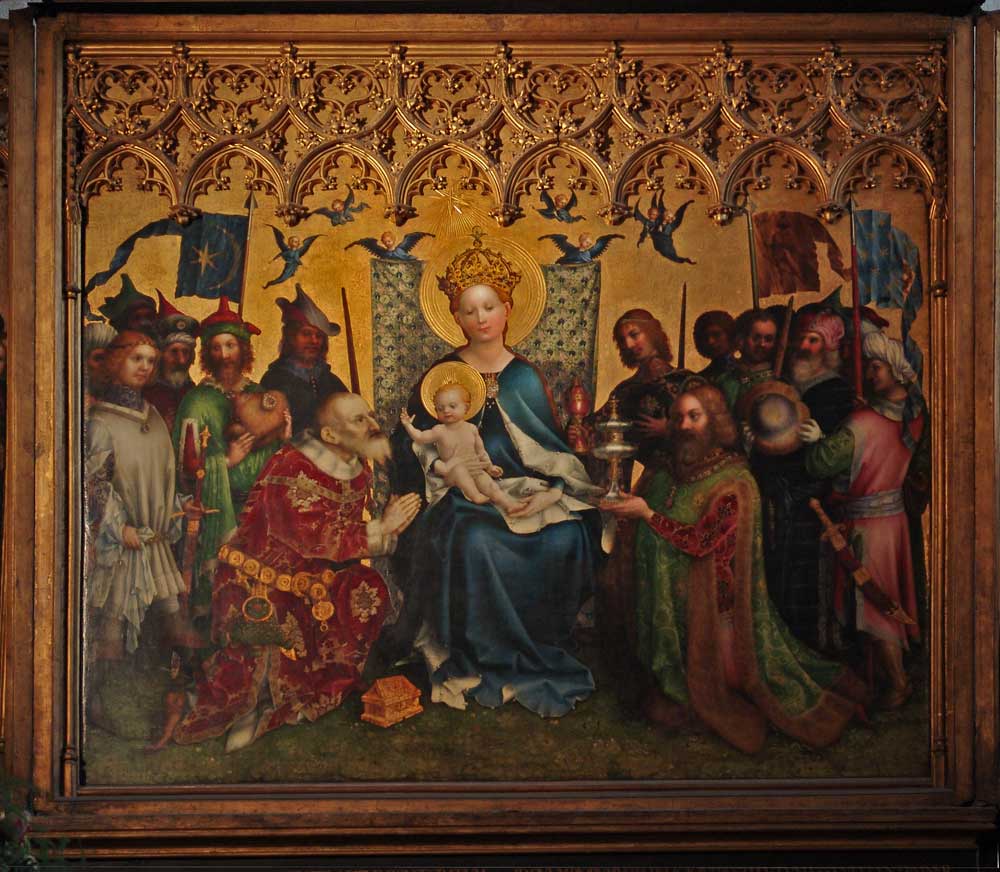Cologne School Of Painting on:
[Wikipedia]
[Google]
[Amazon]
 The term Cologne School of Painting was first applied in the 19th century to describe old German paintings generally. It subsequently came to refer more specifically to painters who had their workshops in medieval
The term Cologne School of Painting was first applied in the 19th century to describe old German paintings generally. It subsequently came to refer more specifically to painters who had their workshops in medieval
 The artists of the Cologne School include Stefan Lochner and William of Cologne, as well as a number of artists identified only by the works they created:
*
* Master of the Saint Bartholomew Altarpiece
*
*
*
*
*
*
The artists of the Cologne School include Stefan Lochner and William of Cologne, as well as a number of artists identified only by the works they created:
*
* Master of the Saint Bartholomew Altarpiece
*
*
*
*
*
*
 The term Cologne School of Painting was first applied in the 19th century to describe old German paintings generally. It subsequently came to refer more specifically to painters who had their workshops in medieval
The term Cologne School of Painting was first applied in the 19th century to describe old German paintings generally. It subsequently came to refer more specifically to painters who had their workshops in medieval Cologne
Cologne ( ; german: Köln ; ksh, Kölle ) is the largest city of the German western States of Germany, state of North Rhine-Westphalia (NRW) and the List of cities in Germany by population, fourth-most populous city of Germany with 1.1 m ...
and the lower-Rhine region from about 1300 to 1550.
Style periods
Initially smaller altarpieces such as the Klaren Altar in theCologne Cathedral
Cologne Cathedral (german: Kölner Dom, officially ', English: Cathedral Church of Saint Peter) is a Catholic cathedral in Cologne, North Rhine-Westphalia. It is the seat of the Archbishop of Cologne and of the administration of the Archdiocese of ...
from about 1360–70 were created, based on book paintings from around the year 1300. The mid-15th century is the high-point of this school, when Stefan Lochner (active 1442–1451) created the ''Altar of the City Patrons'', which is considered to be the greatest masterpiece of the Cologne School. A third creative period followed, under the influence of Netherlandish painters such as Rogier van der Weyden
Rogier van der Weyden () or Roger de la Pasture (1399 or 140018 June 1464) was an early Netherlandish painter whose surviving works consist mainly of religious triptychs, altarpieces, and commissioned single and diptych portraits. He was highly ...
. Rogier's influence is especially notable in the work of the outstanding representative of this final phase, the anonymous painter known as the Master of the Saint Bartholomew Altarpiece. For example, the latter's large ''Deposition of Christ'' resembles the same theme represented in the former's Escorial altarpiece, and the Master's heightened naturalism and emphasis on tear-stained features reflect Rogier's emotionalism.
Painters of the Cologne School
 The artists of the Cologne School include Stefan Lochner and William of Cologne, as well as a number of artists identified only by the works they created:
*
* Master of the Saint Bartholomew Altarpiece
*
*
*
*
*
*
The artists of the Cologne School include Stefan Lochner and William of Cologne, as well as a number of artists identified only by the works they created:
*
* Master of the Saint Bartholomew Altarpiece
*
*
*
*
*
*Master of the Life of the Virgin
__NOTOC__
The Master of the Life of the Virgin, in German the Meister des Marienlebens, (working ca. 1463 — ca. 1490), is the pseudonym given to a late Gothic German painter working in Cologne. He can also be known as the Master of Wilten, o ...
*
*
*
*
*
*Master of the Wasservass Calvary
The Master of the Wasservass Calvary (German - ''Meister des Wasservass’schen Kalvarienbergs'') is the notname for a painter active in Cologne between 1415 and 1435. He is relatively unusual in Cologne art of his time, owing more to Burgundia ...
*
*
*Master of the Sinzig Calvary
The Cologne artists' quarter
The Cologne painters worked mainly in the area of Old Cologne around theSchildergasse __NOTOC__
The Schildergasse (; ksh, Schelderjaß ) is a shopping street in central Cologne, Germany. With 13,000 people passing through it every hour, it is the busiest shopping street in Europe, according to a 2008 survey by GfK. Kölner Stadt ...
, the artists' quarter, where sign painters were also active.
References
* FootnotesFurther reading
* * * * * * * * * * {{DEFAULTSORT:Cologne School Of Painting German art movements German painters Medieval German painters German artist groups and collectives Culture in Cologne History of Cologne